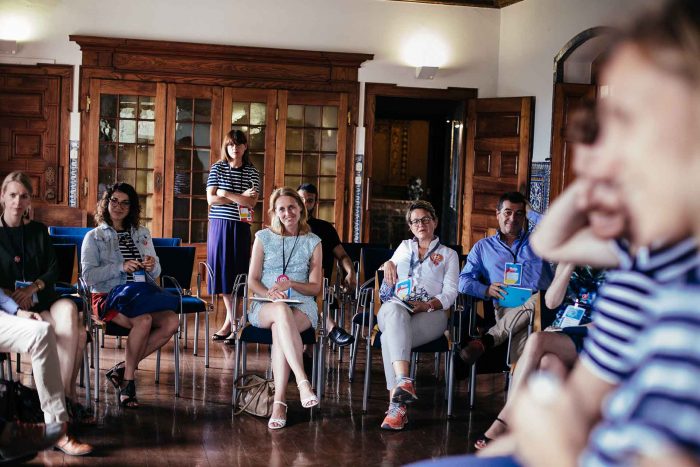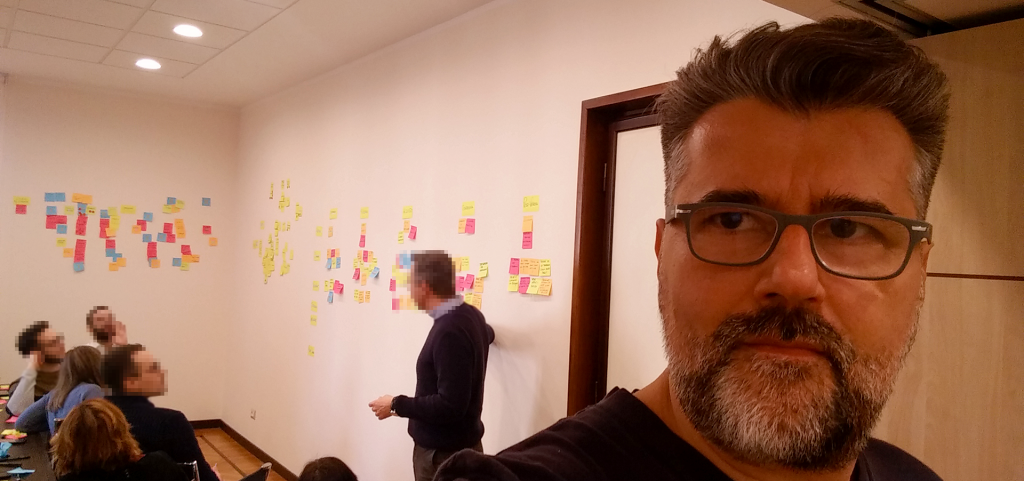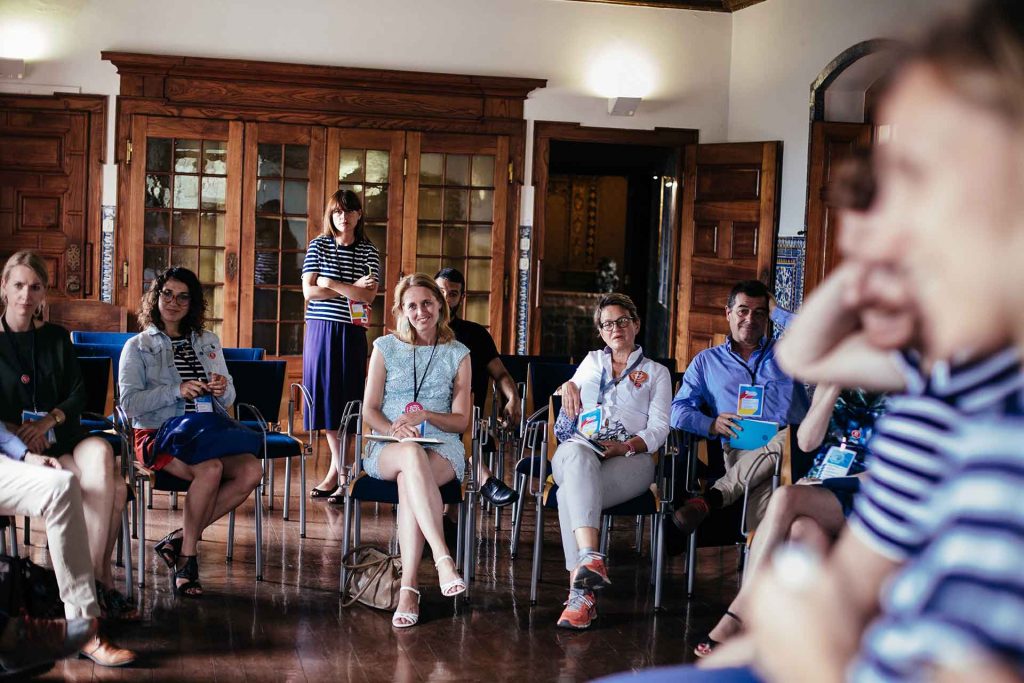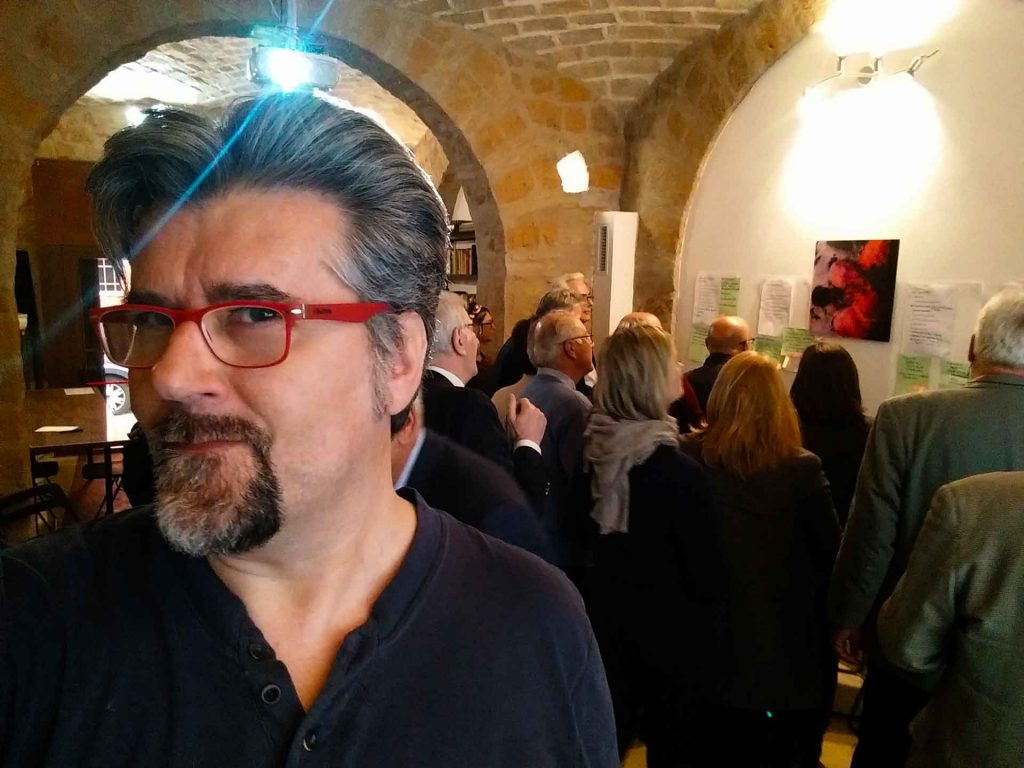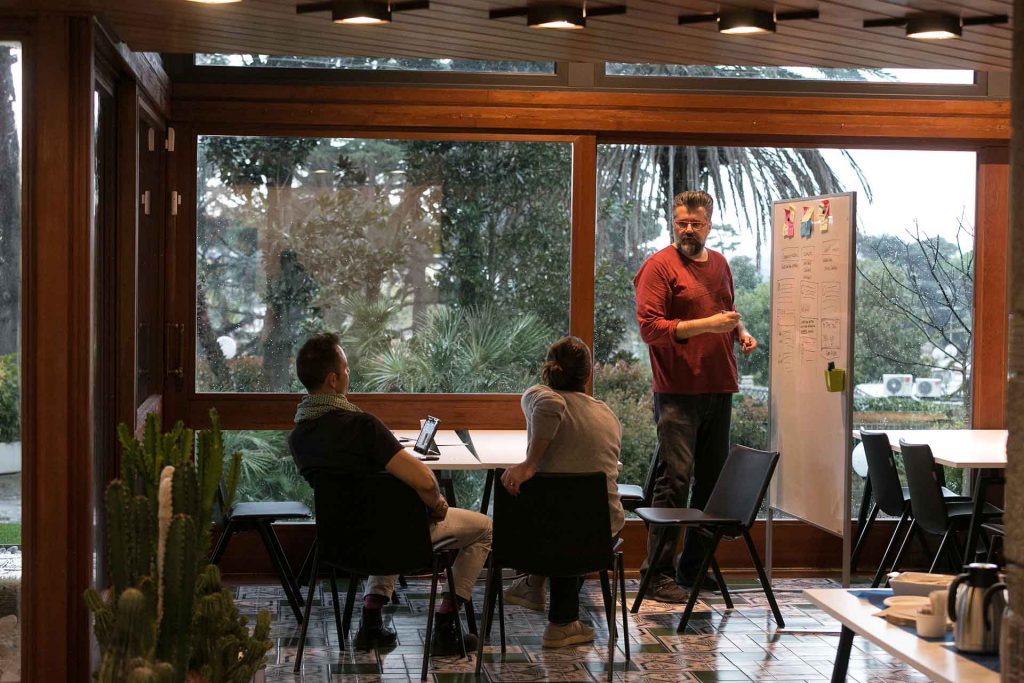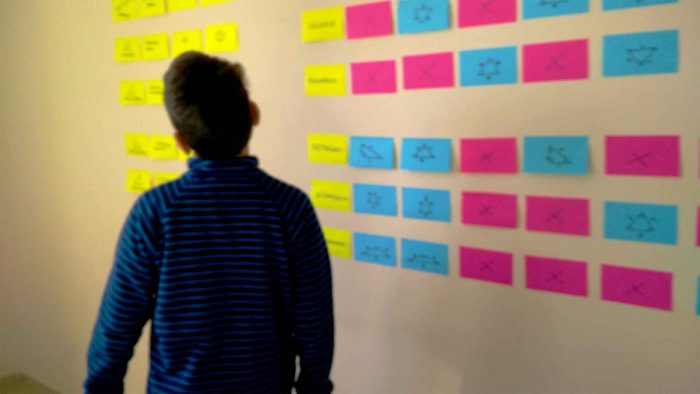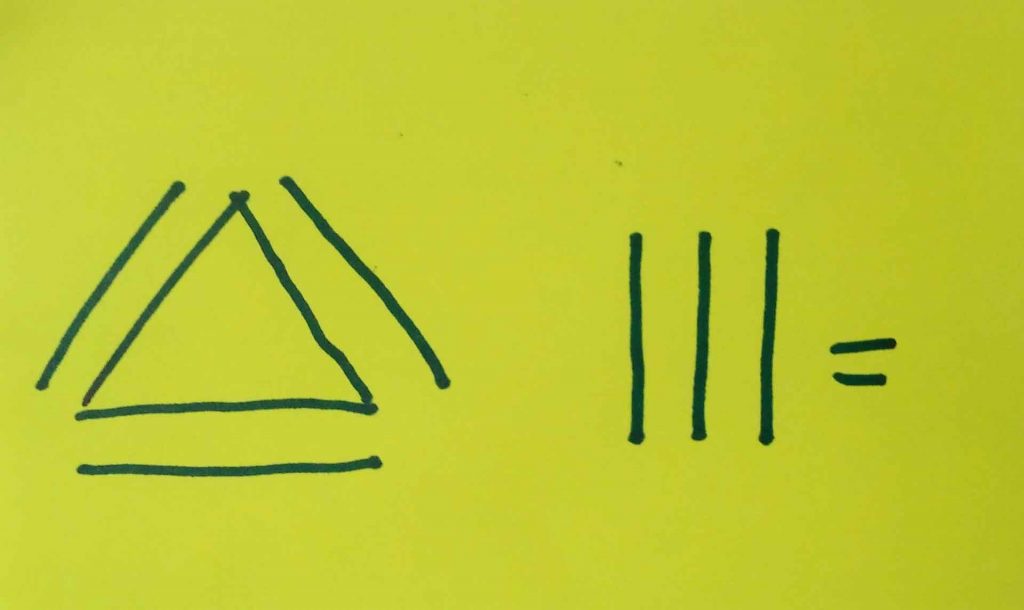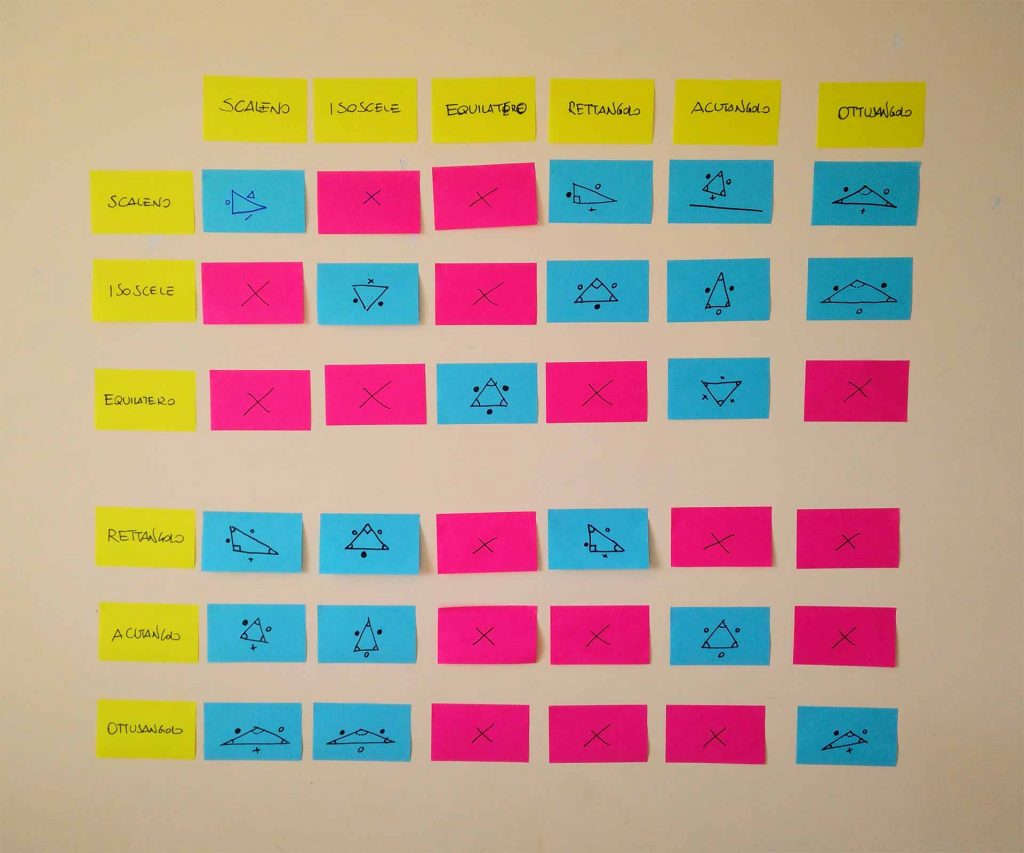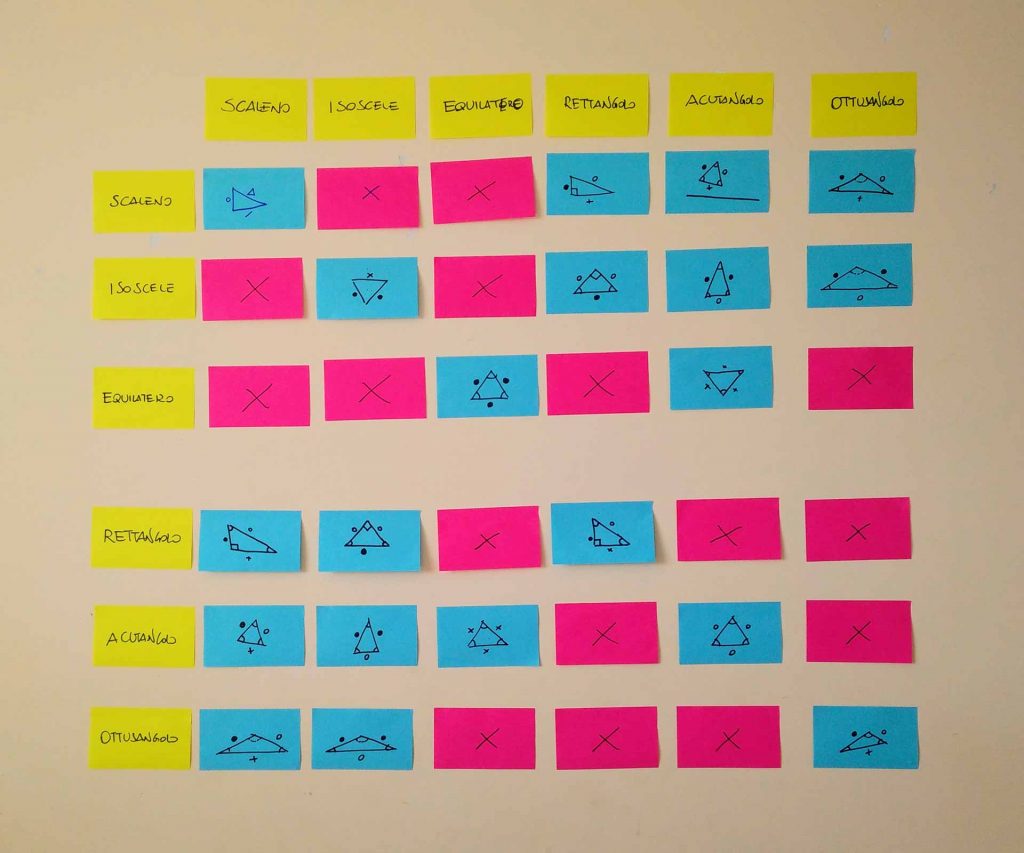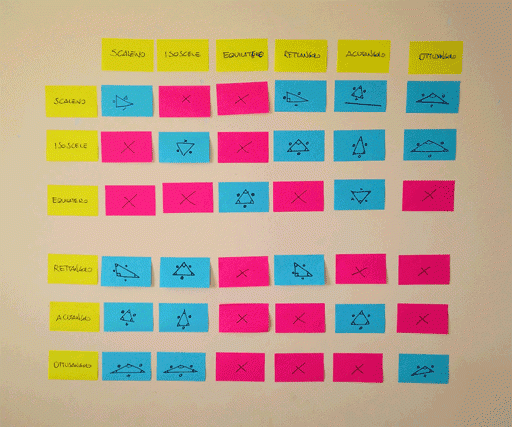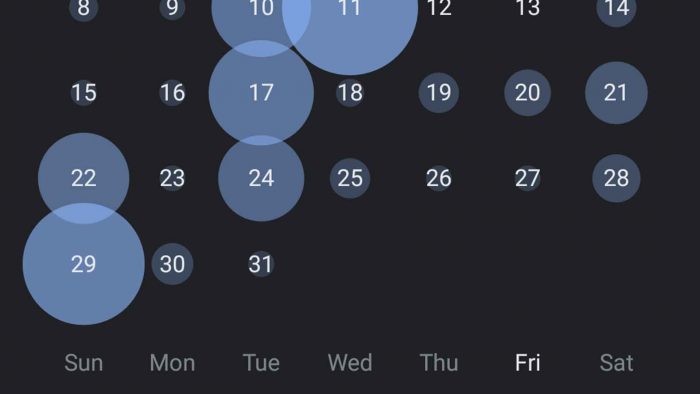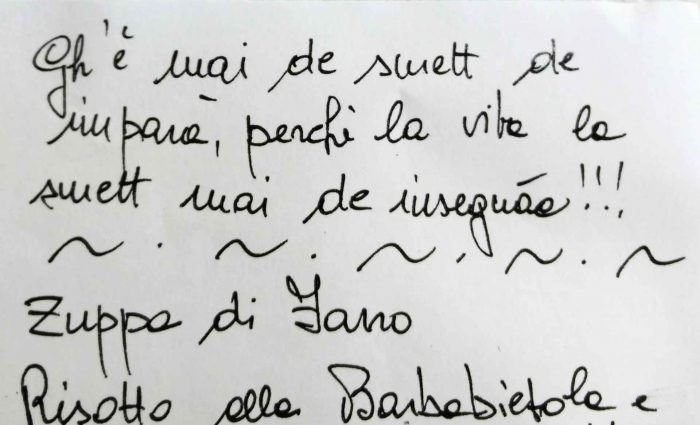Between the 24th of September 2019 and the 31 of December 2019, I will have written for 100 days straight. I wrote every day for an average of 1’200 words per day. I’ve produced over 120’000 words. I collected more than 130 articles in my dedicated folder: some days I wrote multiple times. That amount, if printed, would fill about 500 pages at the standard average of 250 words per page.
How much of this is good?
All of it and I am going to tell you why.
Writing is thinking
I can think better when I write. I collect thoughts which, in great part, I would have lost because I would have forgotten them. I can dedicate focused attention to an idea, an inspiration or a problem. I can grow an archive of thoughts that I can search, compare and browse. I can be more precise with memories because they’re written down, I don’t have to make any effort, I just have to look for that thought.
Writing is a habit
The hardest part is to be fluent, constant and coherent. It’s important to go over the threshold of being able to type quickly without looking at the keyboard. Or, most importantly, to not type at all. I’ve been typing on a keyboard for four decades: I am fast, I can type blindly. This is an enormous advantage. You can cultivate this skill: this is strongly recommended.
Or, just don’t type at all. Technology is marvelous magic: you can talk to your computer, it will type your words for you. Or, even better, get out for a walk, a long walk and talk to your phone. Either it will transcribe it or you can record a file, better for archiving and nostalgic purposes. You will upload it as soon as it’s ready. A few minutes later your transcriptions are readily digitized in your email or your cloud folder.
Yes, it’s not a perfect technology, yet. But having from 80 to 90% accuracy while recording on the street, in the city, is pure magic.
Moreover, editing your draft brings some benefits: you listen actively to your thoughts trying to catch the right words, misspellings, and concepts. You put a certain distance between the “you” who was speaking at the recorder and the present “you” in the role of the editor. Another benefit: you become aware of the useless interjections as the “ahm”, “uh”, “you know”, etc. I was able to almost eliminate any unwanted occurrence of such bad speaking habits. An added benefit: I have improved my speaking skills.
Facilitate starting
Preparation rituals. Create a checklist that you will refine indefinitely.
Prepare the environment. Put your most inspiring music or noise generator. Use earphones or earplugs. Go in the quietest place of the building. Or, if you record, get out on your most loved path.
Avoid distractions. Turn off all notifications from any device: desktop and laptop computers: email, instant messaging, web conference, social media; tablets, smartphones, landlines, buzzers, whatever is not vital, turn it off.
If you need to remain available choose only one single medium of communication with your important ones and establish a code. Make yourself unavailable for the time needed to write.
Set a threshold: time or quantity. I started, for fun, the “500 words per day” challenge. Some people do the “250”, others the “750 per day” or the “3 pages per day”. It’s not important. What matters is setting a daily goal. You should make it much more affordable and reachable if you are just starting. If you feel insecure try with something ridiculously easy as “10 words per day”. Can you write 10 words per day? Think about it: this is a sentence with just a little more than 10 words: 19, to be exact. Can you write a sentence per day?
Ignore the “what”. What should I write about? It is not relevant. You just need to write. It’s like playing scales when you exercise with the piano. It’s a psychological exercise, not a creative endeavor. Let the words flow from your brain. Creativity will come. Naturally. When you will forget what you have to write: then the magic will happen.
Go with the flow. Go in the flow
Get focused on your writing only. Allow yourself time to get warmed. Feel the connection with reality fading away. Forget you are moving your fingers to type. Become one between eyes, arms, hands, fingers, keyboard, screen, text flowing.
Reach the speed at which you are listening to your thoughts, free-flowing and just… transcribe them. It doesn’t matter what you are thinking: just write it.
You will discover it will be easy to tell your truth in this state. You will listen to your inner voice saying unexpected things which, usually, you recognize as indubitable truths that, maybe, you were not able to express any other way.
Keep the pace: write every day
Don’t skip a day. If it happens don’t skip it twice and don’t catch-up with the lost one. Your first goal is not to write but to be able to be consistent with your commitment against all odds.
I cheated. Yes. I did. I confess. I felt so painful the lack of motivation to write and I did not do it for two days, at the very beginning of my challenge. After two weeks I could not stand to see those two lines empty. In a frenzy, I started to search for everything I could consider passable as “writing” to fill those hurtful holes. Nothing! I had nothing! I’ve been recording dozens of hours of notes, I wrote thousands of emails, I sent an infinite number of… yes! Chat messages. So I put together the threads I’ve been following those days and I was able to cover my daily goal. Is this useful? I don’t know, not really in terms of having kept the commitment. But surely I feel like I don’t have to look at empty log lines. It was an important lesson for the following days. I would have not skipped another day for anything in the world!
Anticipate, foresee unexpected events. Of course, life happens. And it doesn’t matter how much you plan: unforeseen things are real. That’s another harsh lesson I learned. It doesn’t matter how much relaxed and safe your day might look like. Block time early before normal “life” hours, usually before 8 a.m., much earlier if you can afford it and: write!. Even on the most tranquil day put your goal in the safe. You’ll always have time to go beyond your threshold.
Block dedicated time on your calendar: set a reminder, do not postpone it. Set an appointment with yourself. Yes, this is what I do. It’s set at 7 a.m. It’s the first notification I get in the morning (together with any other coming from other timezones) and I get an email reminder. That specific warning, piercing through my retina as a bloody red dot in the tray bar is there pushing in painful part of my skull saying: “you have to write!”. And I don’t allow myself to postpone it. It stays on, and as an unread email until I’ve finished my writing ritual.
The pleasure released when I am finished and I can delete that reminder is one of the most cherished pleasures of my current life.
Don’t choose a topic: curate your thoughts.
As I wrote in Why Should You Write? you are the best person in the world to make excuses for yourself. If you want to find a reason not to write, trust me, you will. And asking the most natural and logical question: what should I write about? It is the killer’s excuse. The mother of all excuses. Pregnant with beautiful children as “what if I don’t have anything to say?”, “What if I don’t know what I am talking about?”, “What if I don’t feel prepared without accurate research?” There you go. That is the way to declare defeat before even starting.
This “free-flowing writing challenge” is for you to unblock you. To stretch your fingers (and your mind), to create stamina, to be able to prepare yourself for a long-term commitment. The goal is to write. Where did I write you should have to “write 500 words per day about a popular topic in the news?” Or about a “professional field”? Or about a story of how two people traveled to the other side of the world to find themselves?”
You don’t need to check. Nowhere. The challenge here is to improve your ability to establish a more intimate connection with your inner voice. With your thoughts. And, tell me: do you ever think? Because what I am talking about here is writing as in “transcribing your thoughts”. That is what I am talking about. So, you have no excuses. You just need to recognize that voice always talking in your head. That is you. And, please, listen to it. What is it saying? What are you saying, in your head? That is the matter, the source, the input? And there is no judgment involved, whatsoever. We don’t care about correct spelling, punctuation or style. You don’t give a damn about it. Just focus on the words. Pick them one-by-one and transcribe them. Either with your keyboard or with your voice. What is it all about? You don’t care.
At least for now. Follow me and you will discover what to do about it.
After you have passed through the painful moments of starting this journey, you will feel ashamed of the incredible stupidity expressed by your timid and unstructured thoughts. After some days, that depends on how much you can hold the pain, things will start to make sense. You’ll be faster to catch your thoughts. They will start to have more sense when put one after the other. You will start to recognize patterns of meaning. Recurring thoughts. Elaborations on previous concepts.
That’s the moment! Is there, that I want to bring you. That moment when you will start to lose perception of your fingers touching the keyboard. Your fingers will dance, on their own, at the sound of the most beautiful music. The sound of your brain talking. You’ll start to listen to the flow of ideas. They will start to compose more coherently. You will want to follow, listen and to interact! That is the moment when you are finally starting a dialogue, live, real-time, with your inner voice. And, my friend, at that time all about rituals, distractions, screens, fingers, all of it will become irrelevant. That is the moment when you have opened a door to your mind.
What then? Just listen and transcribe.
It’s only after having collected some thousands of words that you will take the time to reread, filter, select, aggregate. You will curate your thoughts. And you will discover the “what” you have to write about. Because you already did it. You have now just to keep going.
Track your progress: do or do not, there is no try
You can be obsessed with statistics about the number of words, the time spent in writing them, and the like. But the single most important data to track is: did I write today? Your only goal is to answer: yes.
It’s as simple as that. There are no other criteria.
Then, since you’re supposed to have digital copies of your writing, well, you can unleash the most advanced Artificial Intelligences and Data Visualization techniques to extract as much statistical data as you can. It can be useful but remember, you are building a habit. Writing something meaningful or useful for any other application is going to be just a consequence of the consistency of your practice.
How am I going?
I started, bored, unhopeful and a little desperate. I’ve been trying to write consistently for 20 years. I’ve started 100 times and failed 100% of it. So I was expecting the usual gig: some initial exciting little pieces and then, as usual, everything would fade and fail miserably.
✍🏻 Updated on the 31st of December 2019
Yes, I’ve made it! 🥳
And, instead, joyful joys have me, I not only did the 31 days as required by the “challenge”, but I’ve also reached 100 days and I have no intention to stop soon.
Benefits, So far
I created my personal knowledge matrix. This is how I want to call it, a table of topics where the columns are the canonical questions which will drive my inquiry. Can you guess them? They are: why, how, what, when, where, who. While the rows are the topics emerging during my exploratory writings: I am not a single-passion man, sorry, so they range from Design to Computer Graphics, from Futurism to Software Development, from Personal Knowledge Management to Systems Thinking. And (un)fortunately for me this is just a very small sample of what emerged.
I’ve published my first blog! I’ve been planning to do it for too many years. Now I did it and what you are reading is the second article, the first one was Why Should I Write?
I’ve built a new habit. It doesn’t matter how my day is going to be composed: I will reserve from 15 to 60 minutes to write. I feel immensely satisfied with this. It gives me confidence and hope. At the same time, I realize it is just the start. Writing is not enough: I want to publish, as well.
My writing and speaking skills have improved. I can feel the improvement in my writing skills, both in English and Italian, my native language. I perceive a concrete improvement in the effectiveness of my communication skills. My style improved as well. Since I’ve recorded dozens of hours in English, I can see how my oral exposition is more coherent, understandable, and tidy, compared to when I started.
I’ve walked for 300 Km in three months. I used to do it for one year, walking for 1’000 Km, so I maintained this habit and I merged it with the writing one. I’ve recorded lots of hours of notes while walking which I’ve then transcribed with digital tools. The immensely satisfying consequences are, not only saving time but losing weight and gaining a lot of health benefits derived from this practice. Joining walking and voice recording is one of the best things that could have happened to me.
Conclusion: just write!
So, how much are 100 days of writing worth? So far they are the world to me. They meant an incredibly exciting challenge with me, with my life, my job, my family and all the odds against me. I proved to myself that I can change my habits, in positive. I can pursue a more ambitious goal of nurturing my intellectual progress. That I can sustain the pain and the patience to exercise to improve a skill so crucial for me that, I am sure, will be responsible for future opportunities I am not even able to imagine.
This is how I write.
And you? How do you write?
Which of the tricks, tools, and techniques I’ve mentioned are you using? How can I improve with my approach? What should I start doing? What should I stop?





